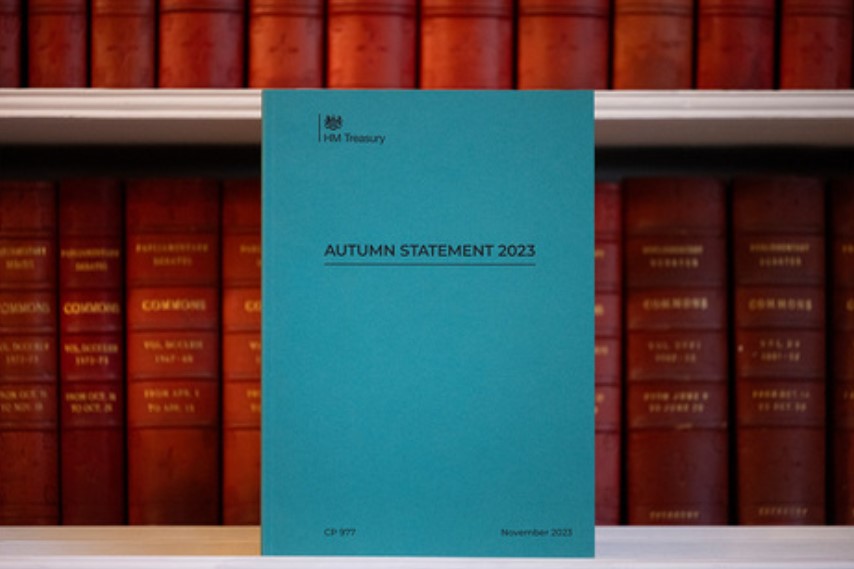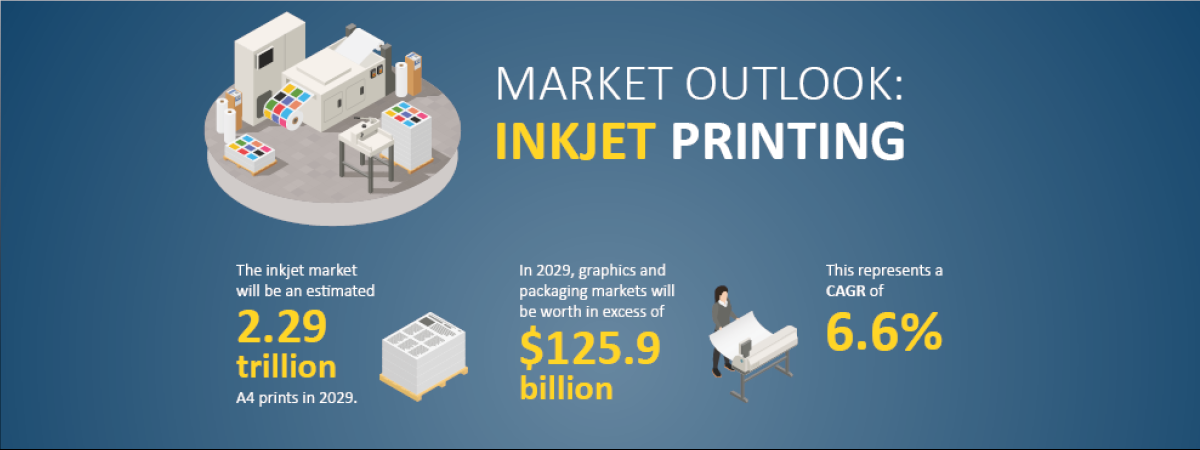November 2023

BPIF Summary and Comment on the Autumn Statement
Autumn Statement 2023
Political Backdrop: Calamities and Campaigns
More than one year on from the calamitous growth plan announced in September 2022, Chancellor Jeremy Hunt is under pressure to hasten a return to economic growth, without spooking financial institutions, and destroying confidence. Furthermore, his fellow Conservative MPs will be hoping he can set the tone for a successful election campaign in 2024.
Has Mr Hunt been able to make the necessary tax tweaks to get widespread support from his party and the electorate?
Economic Backdrop: Inflation and Growth
In January, when inflation was running at over 10%, the government vowed to halve inflation by the end of the year. Overlooking the fact that responsibility for inflation lies with the Bank of England's Monetary Policy Committee, inflation fell to 4.6% in October, and is expected to continue a gradual decline before reaching the Bank's 2% target in 2026.
Now that inflation has been halved, in accordance with the Prime Minister's objective, the government intends to shift focus towards growth.
UK economic growth stalled in Q3 this year, following three quarters of only marginal growth. Unsurprising given that the Bank of England has increased interest rates on fourteen occasions since 2021. The desired effect of this is to curb inflation, but it does so by dampening economic growth.
Prior to the Autumn Statement, the Bank had not been expecting economic growth to return until the second quarter of 2025; and not to exceed 1% until the end of 2026.
If the measures announced in the Autumn Statement prove to be in any way inflationary, then interest rates, and therefore borrowing costs, will stay higher for longer.
What is the government's plan for growth, and how has the Office for Budget Responsibility (OBR) revised their growth forecasts?
Pre-Statement Announcement: National Living Wage to rise to £11.44
On Tuesday the government announced the biggest ever increase to the National Living Wage, worth over £1,800 a year for a full-time worker. Additionally, for the first time, the rate will also apply to 21 and 22-year-olds. The changes in the hourly rate, due to come into effect in April are:
|
Employee group |
Current rate |
New rate |
Increase |
|
23-year-olds + |
£10.42 |
£11.44 |
9.8% |
|
21 and 22-year-olds |
£10.18 |
£11.44 |
12.4% |
|
18 to 20-year-olds |
£7.49 |
£8.60 |
14.8% |
|
Apprentices |
£5.28 |
£6.40 |
21.2% |
The government hopes that these measures will encourage more people back to work and will benefit those employees on lower paid wages. However, it is a significant extra cost to business - not just for the extra money to pay the employees on lower wages, but more significantly for the extra cost to maintain wage differentials for more experienced workers, and those in higher skilled and rewarded occupations.
Are there other measures in the statement that will reduce other costs faced by businesses?
Headline Measures: Boosting Economic Growth - 110 Not Out
The government is focusing on five areas: reducing debt; cutting tax and rewarding hard work; backing British business (with 110 measures); building domestic and sustainable energy; and delivering world-class education.
- Main rate of National Insurance cut from 12% to 10% from 6 January.
- Further National Insurance payments for self-employed either abolished or cut.
- Universal Credit and other benefits to increase by 6.7% from April.
- State pension payments to increase by 8.5% from April.
- Full expensing - where businesses can reduce their taxable profit by the full cost of any qualifying investment in the year they invest - made permanent (previously temporary measure until the end of March 2026).
- Business rates - 75% business rates discount for retail, hospitality and leisure firms extended for another year.
- A freeze to the small business multiplier, which will protect around 90% of ratepayers for a fourth consecutive year.
- £4.5bn funding to attract investment to strategic manufacturing sectors, including green energy, aerospace, life sciences and zero-emission vehicles.
- Three advanced manufacturing Investment Zones will be established in Greater Manchester, East Midlands, and West Midlands.
- The Investment Zones programme and freeport tax reliefs will be extended from 5 years to 10 years, and a new £150 million Investment Opportunity Fund will support Investment Zones and Freeports to secure specific business investment opportunities.
- £500m over the next two years to fund artificial intelligence innovation centres.
- SMEs will be supported with tougher regulation on late payers to improve prompt payments, the expansion of Made Smarter in Great Britain and continued funding for Help to Grow.
- The existing R&D Expenditure Credit and Small and Medium Enterprise Scheme will be merged from April 2024. The rate at which loss-making companies are taxed within the merged scheme will be reduced from 25% to 19%, and the threshold for additional support for R&D intensive loss-making SMEs will be lowered to 30%.
- The Climate Change Agreement Scheme will be extended, giving energy intensive businesses like steel, ceramics, and breweries around £300 million of tax relief every year until 2033 to encourage investment in energy efficiency and support the Net Zero transition.
- Funding of £50m over the next two years to pilot ways to increase the number of apprentices in engineering and other key growth sectors.
Read the Autumn Statement press notice from HM Treasury here. The Chancellor's speech here. And the full Autumn Statement publication here.
Office for Budget Responsibility (OBR): More inflation and less growth
The first two paragraphs for the executive summary in the OBR's latest Economic and Fiscal Outlook provide a useful summary as to how the OBR views the Chancellor's measures announced in the Autumn Statement, and how their forecasts have changed.
In short, inflation is expected to remain higher for longer - and therefore interest rates are also expected to be higher for longer. GDP is expected to grow, fuelled by inflation, but growth forecasts have been revised downwards.
The economy has proved to be more resilient to the shocks of the pandemic and energy crisis than anticipated. By the middle of this year, the level of real GDP stood nearly 2 per cent above its pre-pandemic level and around 3 per cent above our March forecast. But we now expect the economy to grow more slowly over the forecast period, leaving the level of real GDP only ½ a per cent higher in the medium term than in our March forecast. Inflation is expected to be more persistent and domestically fuelled than we previously thought, falling below 5 per cent by the end of this year but not returning to its 2 per cent target until the first half of 2025, more than a year later than in March. Markets now expect interest rates will need to remain higher for longer to bring inflation under control. Despite the more challenging outlook for the real economy, higher inflation leaves nominal GDP nearly 5½ per cent higher by the start of 2028 than we forecast in March.
More persistent, domestically driven inflation boosts nominal tax revenues compared to March. But it also raises the cost of welfare benefits, and higher interest rates raise the cost of servicing the Government's debts. It is mainly due to the Chancellor's decision to leave departmental spending broadly unchanged that higher inflation and other forecast changes reduce borrowing by £27 billion in 2027-28 compared to our March forecast. The Chancellor spends this windfall on cuts in National Insurance Contributions, permanent up-front tax write-offs for business investment, and a package of welfare reforms, which together provide a modest boost to output of 0.3 per cent in 5 years. He still meets his target to get debt falling as a share of GDP in 5 years' time by an enhanced margin of £13 billion, but mainly thanks to the rolling nature of the rule giving him an extra year to get there. And while personal and business tax cuts reduce the tax burden by ½ a percentage point, it still rises in each of the next 5 years to a post-war high of 38 per cent of GDP.
Source: Office for Budget Responsibility (OBR), https://obr.uk/
What does it mean for print?
The BPIF is pleased that our lobbying activities have not been in vain - Government has listened and made changes in numerous areas that will benefit the industry. Particularly regarding full expensing, late payment concerns, extending the Climate Change Agreement Scheme, and supporting apprenticeships. The industry is also proud to be training, investing in, and rewarding its employees, but we must acknowledge that there will be concerns, not so much with the new minimum wage levels, but concerns related to the knock-on costs associated with the significant increases made to the hourly rates.
National Living Wage
Approximately 10% of employees (less than 10,000 employees) in the UK Printing Industry earn an hourly rate of £10.95 or less. This is 5.1% above the current NLW, and 4.5% below the NLW set for next year. BPIF estimates that there are approximately 1,000 apprentices in the industry, and that 10% of all employees are aged 23 and under. Many of these employees will be scheduled for a pay review before the new NLW is due to come into effect.
This analysis suggests that the UK Printing Industry pays all employees above the levels stipulated in the minimum wage legislation. However, it is the cost of maintaining differentials to higher skilled and more experiences employees that becomes significant when Government makes large increases to minimum wage levels.
Full Expensing
Probably the single biggest change for business in the Autumn Statement - and, as a strongly positive investment-led industry, one that will benefit UK printing. Full expensing allows companies to deduct spending on new machinery and equipment from profits.
In 2021, the government introduced the super deduction to incentivise business investment. At Spring Budget 2023 the government went further, replacing this with full expensing for three years from 1 April 2023, allowing businesses to write off the full cost of qualifying plant and machinery investment. BPIF CEO Charles Jarrold wrote to the Chancellor earlier in November with research evidence on the importance of capital allowances for driving investment, and sustainability improvements. This was then followed up by with BPIF involvement in the joint lobbying fronted by the CBI and Make UK. We are very pleased that the government has now making this change permanent.
Full expensing is a 100% first-year allowance for main rate expenditure, and the associated 50% first-year allowance for special rate expenditure permanent.
This measure is designed to stimulate business investment in plant and machinery by increasing the tax relief available in the accounting period in which the expenditure is incurred. The amount of expenditure that can qualify for this measure is uncapped, which means that the more that is invested, the greater the potential tax savings.
According to the Autumn Statement this is effectively a permanent tax cut of £11 billion a year, boosting business investment by £14 billion across the forecast period and helping to grow the economy.
Read more about permanent full expensing here.
Late Payment
Issues connected to late payments are a common bugbear in the industry, and a topic that we frequently research and lobby Government on.
One of the key challenges facing SMEs is the cash-flow implications of late payments, which hold small businesses back from investing and innovating. Alongside publication of the Payment & Cash Flow Review Report and action taken through the Procurement Act, the government will lead by example in introducing more stringent payment time requirements for firms bidding for large government contracts. From April 2024, firms bidding for government contracts over £5 million will have to demonstrate they pay their own invoices within an average of 55 days, tightening to 45 days in April 2025, and to 30 days in the coming years.
It's welcoming to see the issue of late payment acknowledged, but more needs to be done to tackle smaller contracts and encourage prompter payment in private commercial transactions.
Climate Change Agreement Scheme
The Climate Change Agreement Scheme is an important mechanism for high energy users in the printing industry can limit a proportion of their bill, and focus their attention on energy efficiency and reduction. The scheme for the industry was recently extended to 2027. The government has now committed to running the scheme until 2033 - though it does look likely that the qualifying companies will be limited with the introduction of new qualifying criteria.
The Climate Change Agreement Scheme will be extended, giving energy intensive businesses like steel, ceramics and breweries around £300 million of tax relief every year until 2033 to encourage investment in energy efficiency and support the Net Zero transition.
Future Climate Change Agreement scheme - The government is introducing a new, six-year Climate Change Agreement scheme. Participants that meet agreed energy efficiency or decarbonisation targets between 2025 and 2030 will be entitled to reduced rates of Climate Change Levy from 1 July 2027 to 31 March 2033. The new scheme will be open to applications for new sectors that meet energy intensity and import penetration criteria, and will require more regular reporting of energy and throughput data.
Charles Jarrold, BPIF CEO, said:
"Overall, I'd say that the sector can rate this as marginally positive - we have been strongly advocating for the government to do more to support a stronger investment culture; it's important for the economy as a whole, and especially for our sector, where ongoing investment is always vital. The commitment properly to "full expensing" is good news, and shows government does listen to the sector.
"We're also pleased to see broad commitment to the Climate Change Agreement - that saves the sector something like £11m a year rewarding environmental improvements, year in year out. Good news but we'll need to all work out the details as the scheme is revised in due course.
"Elsewhere, more of a mixed bag. The recent announcements on trying to tackle the late payments culture in the UK have been a little weak - it's good to see that move up the list again. On apprenticeship training - a bright spot in the sector, there's plenty of scope to make the levy work better, but the funding approach does ensure investment in training, so there needs to be a careful division between baby and bathwater.
"Changes to the national living wage are difficult and contentious - as a sector we all want to see up-skilling and consequent improvements in pay levels, but, the inflation linked increases to the bottom tier are causing significant business challenges in the sector as they feed into pay-scales through members' businesses in order to maintain differentials. This of course then has further impact fuelling the inflation challenge that government and the bank are trying so hard to address.
"Overall, we'll give it a general "OK plus" rating - quite a few things to like, signs that our lobbying and representation efforts have registered, balanced by some aspects that we're less comfortable with."
Downloads
 Intergraf Economic News (Paper Prices) - March 2024
Intergraf Economic News (Paper Prices) - March 2024
March 2024
Access the latest edition of the Economic Newsletter for the European Printing Industry for data on paper consumption, and pricing data for pulp, paper and recovered paper. Data for packaging papers and board is also available with this edition.
 UK to follow global expansion of inkjet printing
UK to follow global expansion of inkjet printing
March 2024
The latest expert analysis from Smithers identifies the potential of the latest generation of inkjet systems to improve profitability across the global print market. Read more about the new report The Future of Inkjet Printing to 2029.










